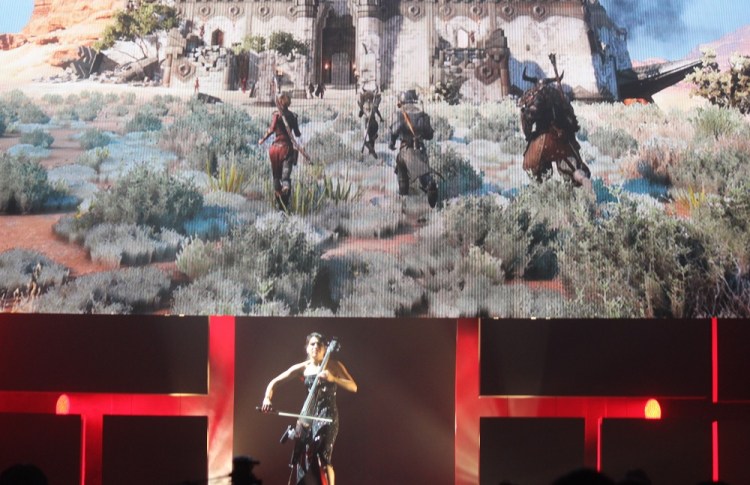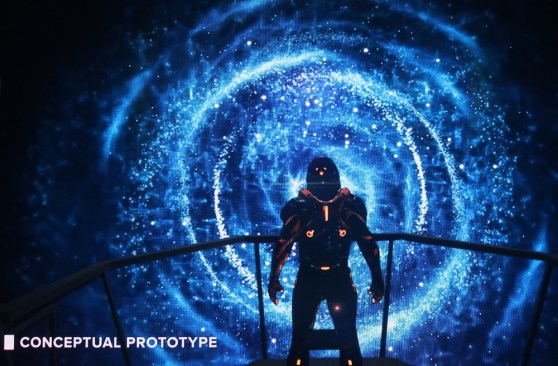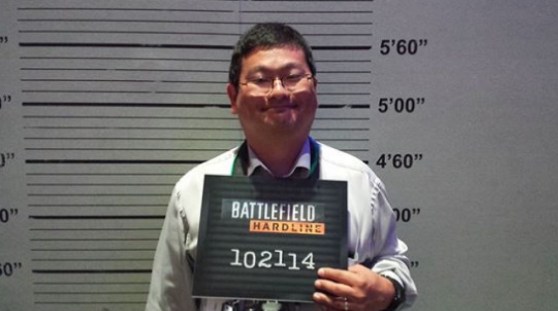GamesBeat: How are you feeling about triple-A in general?
Soderlund: It’s an interesting time. We’re seeing the PlayStation 4 and the Xbox One selling really well. The adoption rate is much higher than we’ve seen in the past. We had such a long time between PS3 and Xbox 360 to PS4 and Xbox One that there was a pent-up demand for new hardware. I also think that us human being are getting more and more used to changing and updating our technology more often. We update our phones quite often – every second year? I do it every year if I can. It’s more habitual today for us to update. That’s why I think people wanted something new.
I’m also excited about what online is doing to games, how connected these consoles are. When you buy a game, you start a journey today. Before, you bought a game and played it and that was the end of it. Today you have to come in and decide where you’ll invest your time. Am I going to invest my time in this or that? When you put a disc in your Xbox or PlayStation or download something to the hard drive, that’s when the journey starts. It can go on for 500 hours, depending on the game. The value proposition is far better than it’s ever been.
We’re getting better and better at extending the life of products by providing more and more stuff. I’m super excited about that. I’m excited about Sony talking about free-to-play on the PlayStation. I’m excited about things like Morpheus and Oculus. I can’t think of a better time to be here.
At the same time, it’s also difficult to navigate all these things. It was arguably easier when it was all set. You shipped a game on a DVD and that was the end of it. You could maybe connect and play online, but that’s as far as it went. Today you have FIFA Ultimate Team inside of FIFA, and that’s almost a game in itself. It’s gigantic. It’s constant. It changes every day. You’re investing in fewer titles, maybe, but you spend a lot more time within those titles than you did before.
GamesBeat: I wonder if (multiplayer online battle arenas) MOBAs like League of Legends are having some influence on other genres. You see that in Ubisoft and their new Rainbow Six game. It’s five versus five, in more limited environments. It’s a very focused multiplayer experience. Do you see that influence on mobile or triple-A in some ways?
Soderlund: I think so. We’re seeing a lot of different types of games. Who would have thought that a game like Minecraft could have been as big as it is today? No Man’s Sky that we saw today, that looked pretty interesting to me. We’re seeing different kinds of games being made today. That’s what this industry needs. We have a couple of games in development that are very different than anything we’ve ever built before.
There will influences flying on both fronts. League of Legends is an interesting one. A lot of companies, us included, believe that the MOBA genre has been proven to be huge. We have our own ideas about how to break into that space. People go to a place where they can hang out socially with other people. They can play against other people, or with them against AI. It’s a very social event. What I’ve been following with interest is how the eSports scene has just taken off. In Sweden, multiple channels on TV just broadcast eSports. Five or six years ago, that didn’t exist. That’s another vector that we have to think about.
Our business is getting more and more complex. Companies like EA have to do their best to try and navigate that. We probably can’t be the best at all these things, but we can choose a couple and focus on them and do them really well. Then we can slowly break out into other things that make sense.
GamesBeat: I wonder if EA has a similar challenge sometimes to what Nintendo has. Nintendo has so many brands that they don’t have enough teams to cover them all. They bring them back once every three or four years and everybody gets really excited, because Zelda’s finally back. But then they almost never do anything new. Splatoon, which they showed here, was a big surprise, a brand-new IP from Nintendo. They have so many brands already that they don’t need new ones. But somehow there might be a trap there.
Soderlund: You absolutely have to continue to invest in new IP. We showed a glimpse of a new BioWare IP that’s really exciting to me. We showed a completely new IP from Criterion, a very different, unique game. We have a lot of our investment today going to new IP, because I firmly believe that if we stop investing that way, that’s the day we’ve signed our death certificate. We’re going to slowly die that way.
That doesn’t mean that we can’t sometimes bring back a game that’s been resting for a while, in case there’s a demand for it. That’s fine. But if you do bring something back, you’re going to have to make sure that it’s relevant, that it pushes the boundaries. You need to come in and lead and not follow with it. We’re trying to do that with something like Battlefront or Mirror’s Edge. But we also have to push quite a bit of our money into new IP.
You saw Dawngate here. You saw the Criterion IP. You saw the BioWare IP. We have more new IP in development today than I can think of since I joined EA in 2006.
GamesBeat: You’ll have to hire more people.
Soderlund: Not necessarily? I don’t think we need to be bigger. We need to prioritize. We need to make sure we put our best foot forward and invest in the right things at the right times. I’m not sure that we need more people.
GamesBeat: What’s your personal favorite game for the year to come?
Soderlund: If I exclude EA, because that’s not fair, what I’ve seen here so far that’s made me most—I would probably say it’s going to be The Division. That’s the one I want to play. I also like the fact that it’s done by some fellow Swedes.
VentureBeat's mission is to be a digital town square for technical decision-makers to gain knowledge about transformative enterprise technology and transact. Learn More





